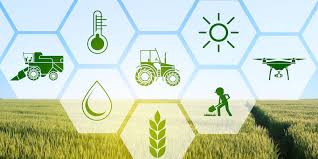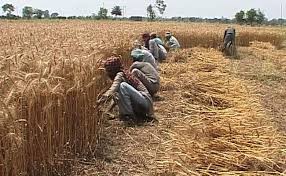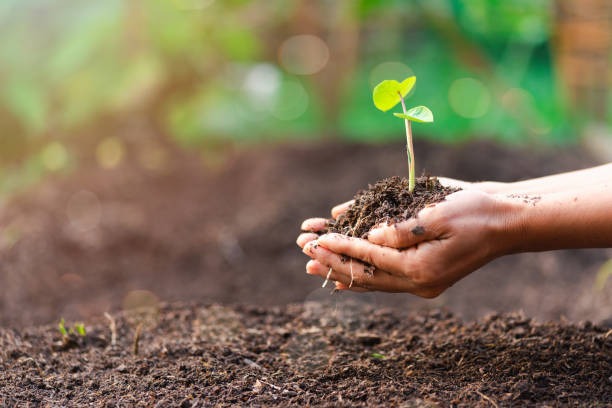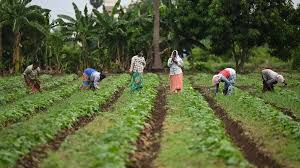
The community nutrition literacy model orchestrated by MSSRF has created a decisive change in food security patterns of Koraput's tribal inhabitants. Through an integrated approach which unites agriculture and nutrition education with community action villagers have strengthened both food diversity in their homes and farming production along with independent community resilience. The initiative has fostered decision-making participation and exposure to government programs which has empowered deprived tribal communities to claim authority over their health and their food.
Introduction
-
Due to its vibrant biodiversity and numerous tribal inhabitants Koraput District of Odisha suffers from extreme poverty together with undernutrition. The high level of undernutrition persists within the district despite various government social welfare programs.
-
NFHS-5 shows that undernutrition affects 43% of children under age five alongside 33% of children who suffer from underweight conditions (2019-21).
-
The dietary consumption requirements of adolescence age children are met by only 17 percent of children.
-
Half of all women in the population are currently suffering from anemia.
-
The M.S. Swaminathan Research Foundation (MSSRF) established a community-directed program for education on nutrition literacy (2013-2022) which used diversified food production as a tool to improve nutrition security.
Community-Led Nutrition Security Initiative
a) Awareness and Training for Nutrition Security
-
The communities gained awareness about their nutritional wellbeing through assessments that measured their height and weight.
-
Every village sent their core groups of men and women to participate in residential training programs about:
-
Balanced diet & dietary diversity
-
Infant and Young Child Feeding Practices (IYCF)
-
Sanitation & hygiene
-
Nutrition-sensitive agriculture (crop diversification, backyard poultry, pisciculture).
-
-
The training delivered interactive activities that combined role-play with group conversations and strategic preparation techniques for people to implement changes.
b) Dietary Transformation Through Agriculture
-
The program encouraged:
-
The program promotes simultaneous cultivation of pulses and vegetables throughout household daily diets.
-
Tribal communities discovered through traditional conservation practices that they serve as protectors of indigenous rice strains.
-
Households expanded their crop varieties from 2-3 to a range of 9-11 types.
-
The renaissance of backyard gardens resulted in extended vegetable and fruit availability throughout yearly periods.
-
Fallow paddy fields received pulse cultivation to provide nutrition throughout the whole year.
-
Community Mobilization and Collective Efforts
a) Strengthening Social and Institutional Support
-
The training program established more than 200 community champions spread throughout 70 different villages to provide nutrition education alongside agricultural knowledge.
-
Throughout ten years the movement developed into a self-nourishing community support network with more than 1,000 active members.
-
Prospective community members participated in panchayat-level talks through unified group decisions.
b) Enhancing Government Engagement
-
Villagers fought for an Anganwadi center at Lecha village until finally receiving a sanctioned construction.
-
Community grain banks need revival because they improve the region's food security.
-
The monitoring system of ICDS feeding programs remains active.
c) Shifting Household Decision-Making
-
A shared management of agricultural duties between men and women raised female involvement in deciding household food consumption patterns.
-
The Women Champions supported ASHA & Anganwadi workers to enhance nutrition services for mothers and children.
-
A mother in Maligad village used program guidance to feed her anemic daughter egg and leafy vegetable and pulses.
Impact of the Initiative
a) Agricultural and Dietary Improvements
-
The numbers show that more than sixty percent of households started growing four or five different crops as opposed to the previous two or three crop cultivation.
-
The households' gardening period increased to 7 to 9 months while it used to be 5 months previously.
-
Increased consumption of pulses, leafy greens, tubers, fruits, poultry, and fish.
b) Social and Economic Upliftment
-
The process led female refugees who had no land to begin renting fields for planting food crops.
-
Soil productivity and health improved through the application of vermi-compost together with organic fertilizers.
-
Songwriting and group meetings at the village level functioned as knowledge channels to transmit awareness ideas throughout neighboring communities.
Conclusion
Community-led transformation in Koraput demonstrates the impact communities have in solving both undernutrition and poverty problems. The achievement demonstrates that feeding programs need supplements from educational programs and sustainable farming with village leadership to establish sustainable food security. Such successful models need to be scaled up throughout India to enhance malnutrition prevention efforts which will result in better health results for remote populations.



 Inclusion of Kosi Mechi Intra-State Link Project under PMKSY-AIBP
Inclusion of Kosi Mechi Intra-State Link Project under PMKSY-AIBP Transforming India's Agriculture and Dairy Sectors: Key Policies and Budget Highlights
Transforming India's Agriculture and Dairy Sectors: Key Policies and Budget Highlights The PEPSU Muzhara Movement: Agrarian Struggle for Land Rights
The PEPSU Muzhara Movement: Agrarian Struggle for Land Rights Gomira Dance: A Masked Ritual of North Bengal
Gomira Dance: A Masked Ritual of North Bengal Soil Fertility Mapping: A Game-Changer for Indian Agriculture
Soil Fertility Mapping: A Game-Changer for Indian Agriculture Thakkolam Temple: A Forgotten Tamil Heritage in Urgent Need of Restoration
Thakkolam Temple: A Forgotten Tamil Heritage in Urgent Need of Restoration Biotechnology in Agriculture: Transforming Farming for the Future
Biotechnology in Agriculture: Transforming Farming for the Future Support for Farmers to Reduce Post-Harvest Losses & Cold Chain Infrastructure
Support for Farmers to Reduce Post-Harvest Losses & Cold Chain Infrastructure Union Budget 2025-26: Boosting Extra-Long Staple (ELS) Cotton Farming
Union Budget 2025-26: Boosting Extra-Long Staple (ELS) Cotton Farming






